Last updated on
Explore the essential role of a Kitchen Hood Fire Suppression System in ensuring safety during culinary adventures, as it detects and extinguishes fires in commercial kitchens swiftly and efficiently.
Imagine this scenario: You’re in the middle of preparing a delicious meal for your loved ones when suddenly, a small fire breaks out on your stovetop. Panic sets in as smoke fills the air and you frantically search for a way to extinguish the flames.
This is where a kitchen hood fire suppression system comes to the rescue. In this blog post, we’ll delve into what exactly this system is and how it can be an invaluable addition to any kitchen.
So, buckle up and get ready to discover everything you need to know about kitchen hood fire suppression systems!
What's Inside
Understanding Kitchen Hood Fire Suppression Systems
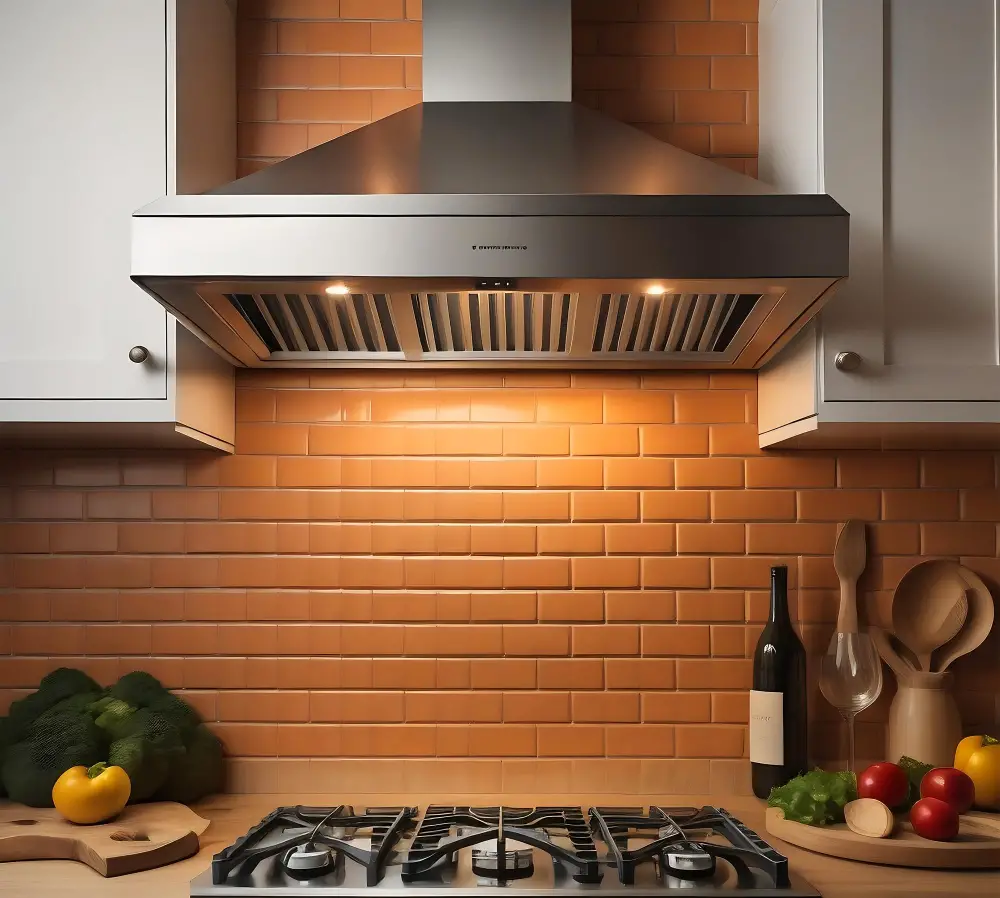
Kitchen hood fire suppression systems are a crucial component of any commercial kitchen, designed to detect and extinguish fires quickly and effectively. Now that you have a grasp on the importance of these systems, let’s dive deeper into understanding how they work.
At its core, a kitchen hood fire suppression system is specifically engineered to protect against fires that may occur in cooking appliances such as stoves, grills, fryers, or other high-heat equipment commonly found in professional kitchens. These systems are strategically installed above the cooking area and consist of various components working together seamlessly.
When a fire breaks out within the range hood or exhaust system – often caused by grease buildup igniting – the detection mechanism within the suppression system activates. This can be done through heat sensors or flame detectors which promptly identify abnormal temperature increases or flames.
Once triggered, an automatic response is initiated where specialized agents (such as wet chemicals) are released from nozzles positioned directly above potential sources of ignition. These agents rapidly suppress flames by cooling down hot surfaces while simultaneously creating a barrier between fuel sources like oil and oxygen – preventing re-ignition.
Understanding how these intricate mechanisms function allows us to appreciate their significance in safeguarding both lives and property during culinary endeavors.
Importance of Kitchen Hood Fire Suppression System

That’s where the importance of a Kitchen Hood Fire Suppression System becomes evident. This crucial system acts as an unsung hero, swiftly detecting and extinguishing fires before they have a chance to escalate into something more dangerous.
Imagine returning to our earlier scenario: you’re in the midst of preparing that mouthwatering meal when suddenly, flames erupt from your stovetop. But this time, thanks to your trusty kitchen hood fire suppression system, there’s no need for panic or frantic searching for an extinguisher.
The system springs into action immediately upon detecting the flames and releases suppressant agents specifically designed to smother fires caused by cooking oils and grease.
The significance of having such a system in place cannot be overstated – it not only protects lives but also prevents extensive property damage that can result from uncontrolled fires in commercial kitchens. By quickly suppressing flames at their source within seconds after ignition occurs, these systems minimize potential injuries and reduce downtime due to repairs or rebuilding efforts.
Moreover, many insurance companies require businesses with commercial kitchens to have certified fire suppression systems installed as part of their coverage policies. Compliance with these regulations ensures not only safety but also peace of mind knowing that you are adequately prepared should disaster strike.
Types of Kitchen Hood Fire Suppression Systems
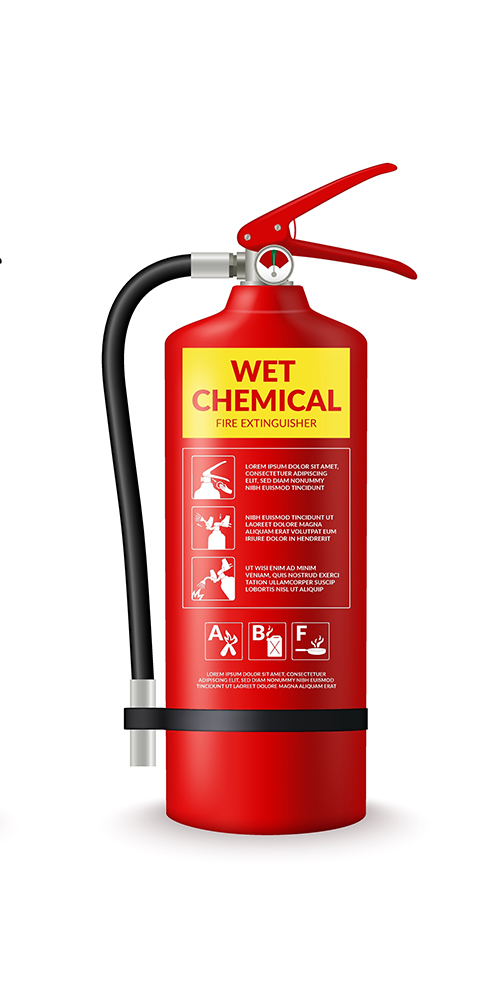
Let’s take a closer look at some of the most common types:
1. Wet Chemical Systems: These systems utilize a special wet chemical agent that is specifically designed for suppressing fires caused by cooking oils and fats.
When activated, the system releases a fine mist that quickly cools down the flames and forms a soapy layer on top of the burning surface, preventing re-ignition.
2. Dry Chemical Systems: Ideal for combating fires fueled by flammable liquids or gases, dry chemical systems use powdered agents such as potassium bicarbonate or monoammonium phosphate to smother flames effectively.
3. Dual-Agent Systems: Combining both wet chemicals and dry chemicals in one system provides comprehensive protection against various types of kitchen fires.
The wet chemical component targets grease-related incidents while the dry chemical component handles other fuel sources like gas or electrical fires.
4.Carbon Dioxide (CO2) Systems: CO2 extinguishing agents displace oxygen from an enclosed space rapidly, suffocating any fire present without leaving behind residue that could contaminate food preparation areas.
5. Automatic Fire Suppression System with Water Mist Technology: This innovative type uses high-pressure water mist technology to suppress flames efficiently while minimizing water damage compared to traditional sprinkler systems. Each type has its own unique advantages depending on factors such as kitchen layout, cooking methods used, and local regulations governing fire safety standards in commercial kitchens.
Components of a Fire Suppression System
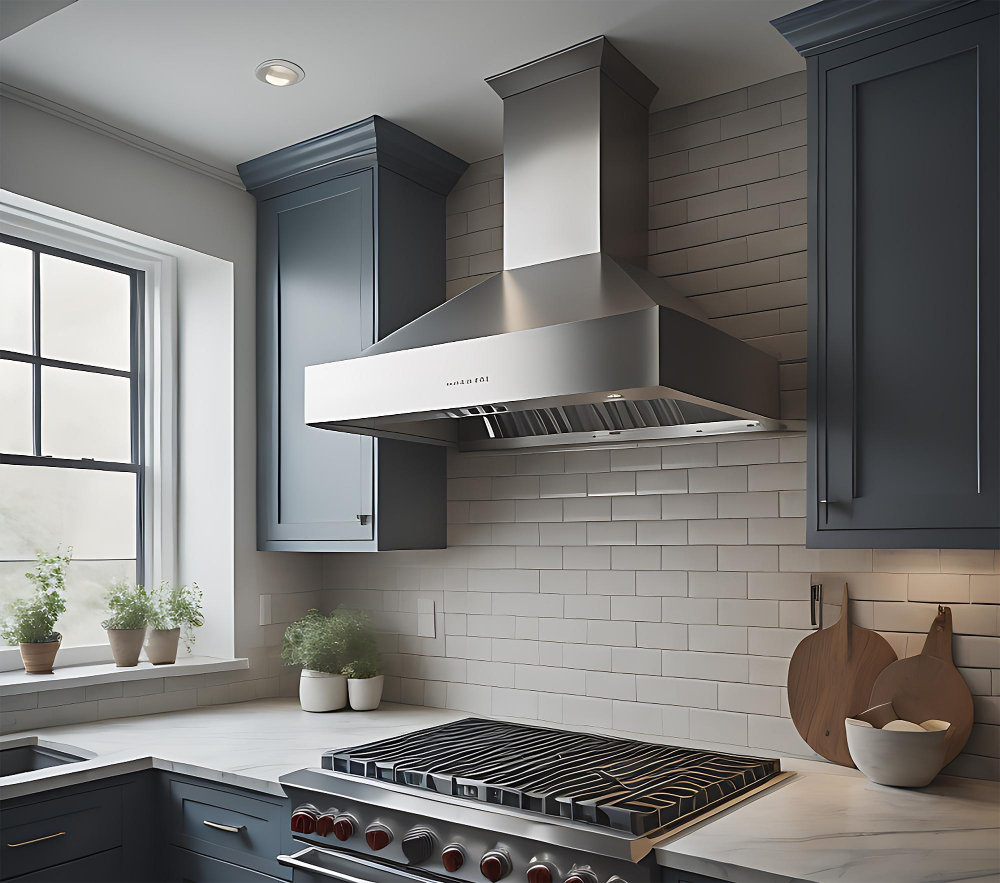
These components work together seamlessly to detect and suppress fires, ensuring the safety of both your kitchen and those in it.
The main component of a fire suppression system is the detection mechanism. This can be in the form of heat sensors or flame detectors strategically placed near potential sources of fire, such as stovetops or fryers.
Once these sensors detect an abnormal rise in temperature or presence of flames, they send signals to activate other parts of the system.
Next up are extinguishing agents that are stored within cylinders connected to pipes running above cooking equipment. The most commonly used agent for suppressing grease fires is wet chemical solution specifically designed for this purpose.
When triggered by the detection mechanism, these cylinders release pressurized agents through nozzles positioned directly over high-risk areas like stoves and grills.
To ensure effective coverage throughout your kitchen space during a fire event, distribution piping plays a vital role by carrying extinguishing agents from storage containers to discharge points where nozzles are installed.
There’s also an essential element called manual activation devices which allow individuals present in case-of-emergency situations (such as staff members)to manually trigger immediate deployment when necessary before automatic activation occurs. Lastly but not least important part includes control panels that serve as command centers for monitoring and managing all aspects related to your fire suppression system’s operation.They provide visual indicators showing whether individual zones have been activated along with audible alarms alerting occupants about ongoing emergencies.
How Does a Kitchen Fire Suppression System Work?
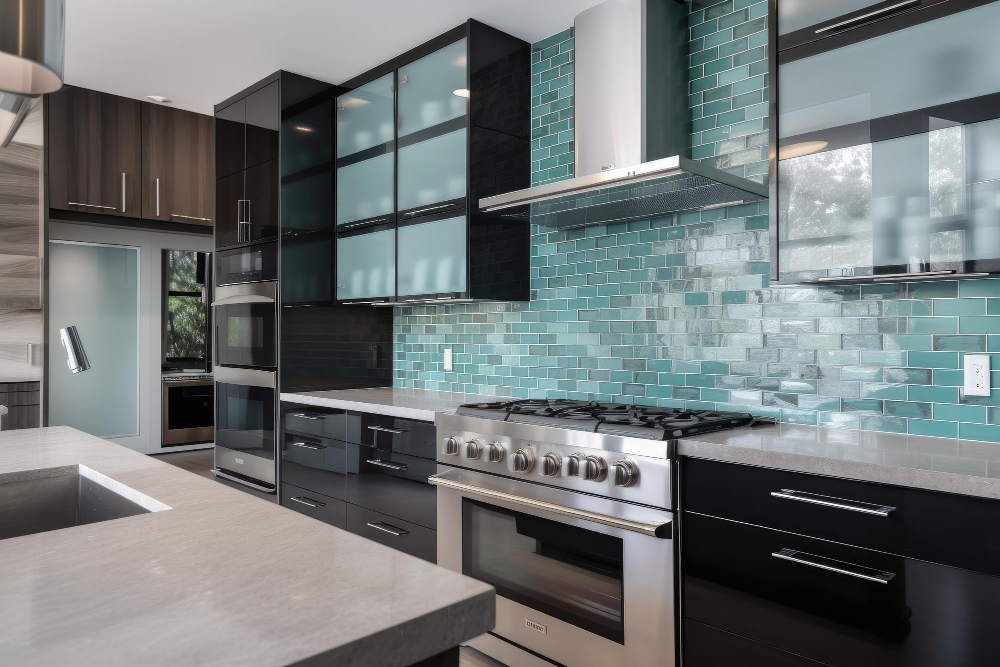
How exactly does this remarkable system work?
The heart of a kitchen fire suppression system lies in its ability to detect fires at their earliest stages. Typically, these systems utilize heat sensors or flame detectors strategically placed near cooking appliances such as stovetops and fryers.
When a sudden rise in temperature or presence of flames is detected, an alarm is triggered.
Upon activation, the fire suppression system releases a specialized extinguishing agent that quickly suppresses the flames before they have a chance to spread. This agent can be either wet chemical-based or dry chemical-based depending on the type of fire being tackled.
Wet chemical systems are specifically designed for grease fires commonly found in commercial kitchens where oils and fats are used extensively during cooking processes. The wet chemicals released form a soapy foam-like substance that effectively cools down hot surfaces while simultaneously creating an impenetrable barrier between oxygen and fuel sources.
On the other hand, dry chemical systems work by releasing powdered substances like potassium bicarbonate or monoammonium phosphate onto open flames. These powders interrupt combustion reactions by smothering fires with fine particles that coat burning materials.
In addition to suppressing fires directly above cooking equipment, some advanced kitchen hood fire suppression systems also incorporate ductwork protection mechanisms which ensure any potential flare-ups within ventilation ducts are promptly addressed as well.
Installation Process of Fire Suppression Systems
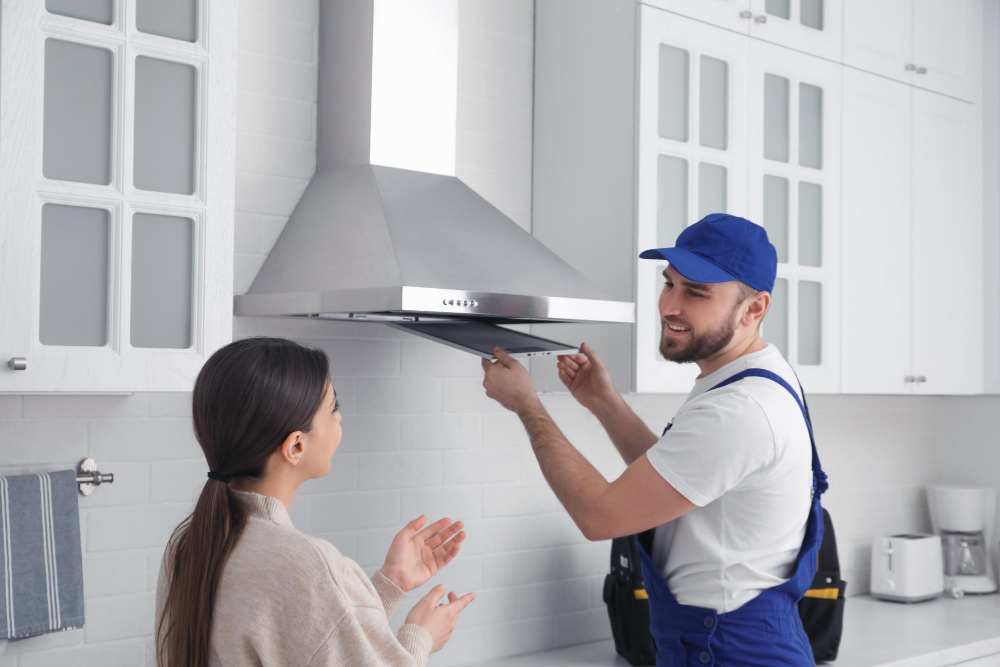
Installing a fire suppression system may seem like a daunting task, but with professional help and proper planning, it can be completed smoothly.
The first step in installing a fire suppression system is to consult with experts who specialize in this field. They will assess your kitchen layout and determine the most suitable type of system for your specific needs.
This could include considering factors such as the size of your kitchen, cooking equipment being used, and any potential hazards that need to be addressed.
Next comes designing an effective layout for placing various components of the fire suppression system. These components typically include detection devices (such as heat or flame detectors), control panels, extinguishing agents (like wet chemicals or dry powder), piping systems connected to hoods above cooking appliances, and manual activation mechanisms.
Once all design aspects are finalized according to safety regulations and local codes compliance requirements are met; installation work begins under professional supervision. The technicians will carefully mount detection devices at strategic locations throughout your kitchen while ensuring they have clear visibility over potential sources of fires like stovetops or fryers.
Piping systems carrying extinguishing agents are then installed above each appliance that requires protection from fires—typically connecting directly with hoods where grease buildup is common during cooking processes. Finally comes testing phase where professionals ensure everything works seamlessly together by simulating different scenarios involving smoke generation or controlled flames near detectors triggering automatic discharge response from suppressant agent containers through nozzles placed strategically around high-risk areas within reach should manual intervention become necessary during emergencies.
Regulatory Compliance for Fire Suppression Systems
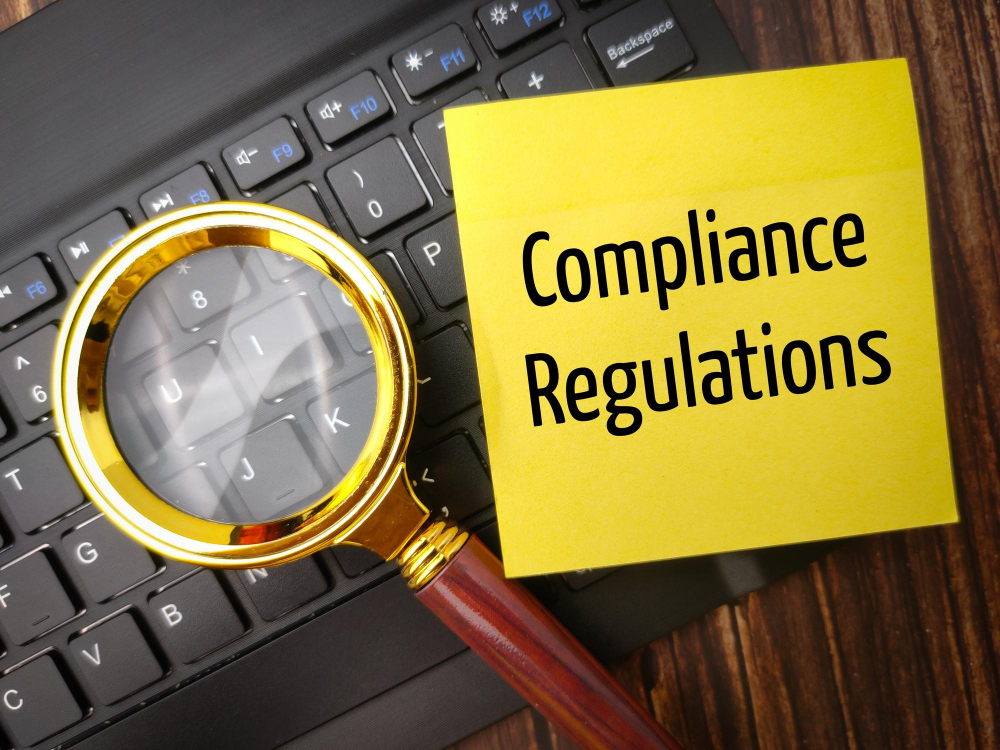
Various governing bodies have established guidelines and regulations that dictate the installation and maintenance requirements for fire suppression systems in commercial kitchens.
These regulations are put in place to ensure that all necessary precautions are taken to prevent fires and protect lives. They outline specific standards for equipment, installation procedures, regular inspections, and maintenance schedules.
By adhering to these regulations, you not only prioritize the safety of your staff but also demonstrate your commitment towards creating a secure environment for everyone who steps foot into your kitchen.
It is important to note that compliance requirements may vary depending on factors such as location or type of establishment. Therefore, it is essential to familiarize yourself with local codes and consult with professionals experienced in fire suppression system installations.
Legal Requirements for Fire Suppression in Kitchens
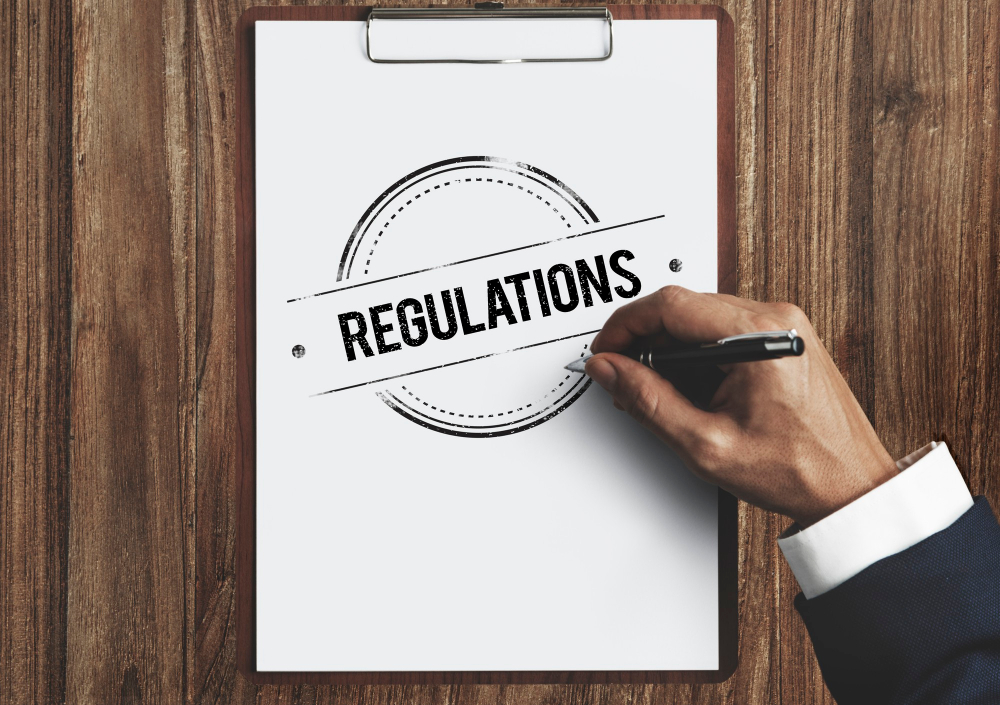
These regulations are in place to ensure the safety of both commercial kitchens and those who work within them.
In many jurisdictions, there are specific codes and standards that dictate the type of fire suppression system required for different types of kitchens. These regulations often outline factors such as minimum coverage area, extinguishing agent specifications, system activation methods, and regular inspection schedules.
Compliance with these legal requirements is crucial not only for ensuring a safe working environment but also for avoiding penalties or fines that may be imposed if a kitchen fails to meet these standards. It is essential for restaurant owners or managers to familiarize themselves with local building codes and health department guidelines regarding fire suppression systems.
By adhering to these legal obligations, you can have peace of mind knowing that your kitchen is equipped with an effective fire protection solution.
Guidelines for Maintaining Fire Suppression Systems
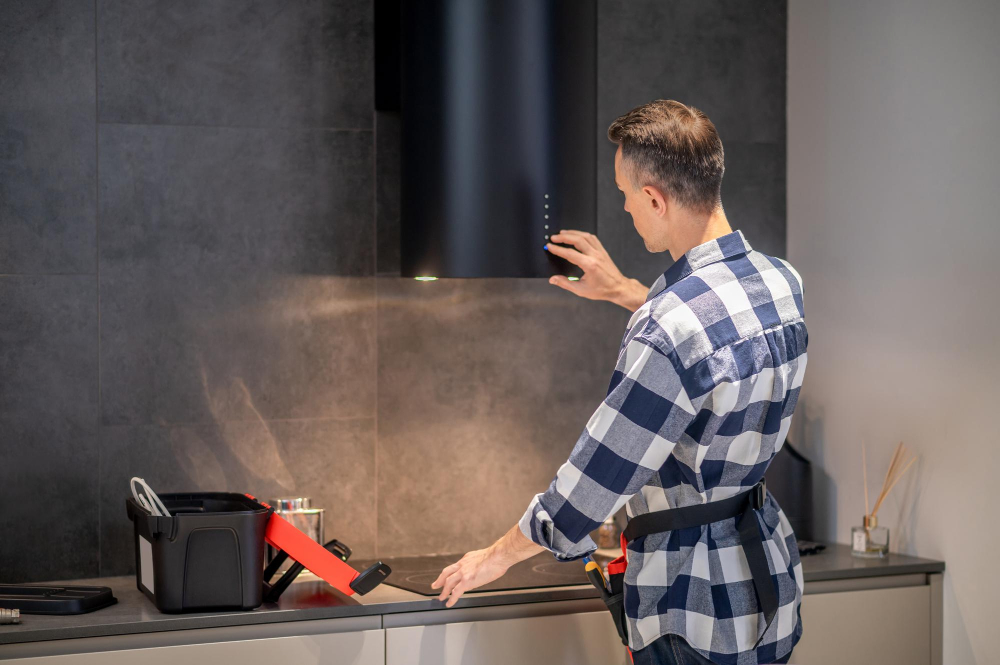
Regular maintenance and adherence to guidelines are essential for the continued effectiveness of these systems.
Guidelines for maintaining fire suppression systems include regular inspections, cleaning, and testing. It is recommended to schedule professional inspections at least twice a year or as per manufacturer recommendations.
During these inspections, technicians will thoroughly examine all components of the system to identify any potential issues or signs of wear and tear.
Cleaning plays a vital role in maintaining the efficiency of your fire suppression system. Grease buildup can hinder its functionality by clogging nozzles or obstructing sensors.
Regularly clean both the exhaust hood and filters according to manufacturer instructions using appropriate cleaning agents.
Testing your kitchen hood fire suppression system on a routine basis ensures that it functions properly when needed most – during an actual emergency situation. Conducting tests involves simulating fires (using approved methods) while monitoring how effectively the system detects and suppresses them.
In addition to scheduled maintenance tasks, be vigilant about addressing any immediate concerns promptly: if you notice unusual noises coming from your equipment or suspect damage after an incident such as accidental activation or power surges occur – contact professionals immediately for assessment and repairs if necessary.
Importance of Routine Fire Suppression System Checks
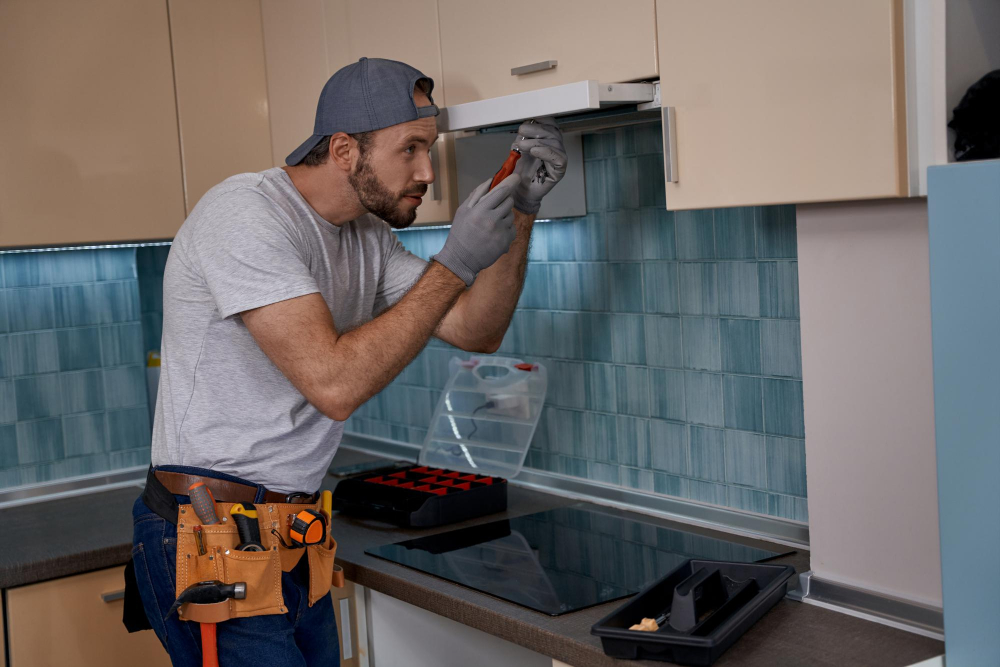
Just like any other piece of equipment, these systems require regular attention to ensure they are functioning optimally when needed most.
Think about it this way: You wouldn’t drive your car without getting regular oil changes or neglecting tire rotations, would you? The same principle applies to your fire suppression system. By conducting routine checks and inspections, you can identify any potential issues before they escalate into major problems.
Routine fire suppression system checks involve examining various components such as the detection sensors, control panel settings, nozzles or sprinkler heads (if applicable), gas cylinders (if present), and electrical connections. These inspections help ensure that all parts are in proper working order and ready for action if a fire were to occur.
Routine maintenance allows for early detection of wear-and-tear on critical components that may need replacement or repair. This proactive approach not only helps prevent unexpected failures but also extends the lifespan of your kitchen hood fire suppression system.
By adhering to a schedule of regular check-ups – whether performed by an authorized technician or yourself – you can rest assured knowing that your kitchen is equipped with a reliable defense against potential fires.
Troubleshooting Common Fire Suppression System Issues

Panic sets in as you realize that without a working system, even a small fire could quickly escalate into something much more dangerous. But fear not! In this section, we will explore some common issues that can arise with kitchen hood fire suppression systems and provide troubleshooting tips to help you get back on track.
One common issue is clogged nozzles or pipes. Over time, grease and debris can accumulate within the system, obstructing the flow of extinguishing agents when they are needed most.
Regular cleaning and maintenance are crucial to prevent such blockages from occurring.
Another problem may be faulty detection mechanisms. If your system fails to detect fires accurately or consistently triggers false alarms, it’s essential to address these issues promptly.
Check for any loose connections or damaged sensors that may be causing the malfunction.
Inadequate pressure in the extinguishing agent cylinders can hinder proper functionality of your fire suppression system during an emergency situation. Ensure regular inspections and refills are conducted by certified professionals who can verify optimal pressure levels for effective operation.
Lastly but importantly – human error! It’s possible for someone accidentally disconnects power supply lines or disables safety features unknowingly while performing routine tasks like cleaning or maintenance activities around the kitchen hood area. Remember always consult with trained technicians if you encounter any problems with your kitchen hood fire suppression system as they possess specialized knowledge required for troubleshooting complex issues effectively.
Protection for Industrial Kitchens

With the high volume of heat, flammable materials, and potential for accidents, it’s crucial to have robust fire protection measures in place. This is where specialized fire suppression systems designed specifically for industrial kitchens come into play.
In an industrial kitchen setting, such as those found in restaurants or catering facilities, the risks associated with fires can be significantly higher than in residential kitchens. The presence of commercial-grade appliances like deep fryers and grills increases the chances of grease fires or other types of kitchen-related incidents.
To ensure optimal safety within these environments, dedicated fire suppression systems are installed above cooking equipment and ventilation hoods. These systems work hand-in-hand with existing hood ventilation to detect flames or excessive heat quickly.
Once a potential hazard is detected by sensors within the system (such as flame detectors), it triggers an automatic response that releases suppressant agents directly onto the source of ignition while simultaneously shutting off fuel sources like gas lines or electricity supply. This rapid response helps prevent small incidents from escalating into full-blown fires that could endanger lives and cause extensive damage to property.
The design considerations for industrial kitchen fire suppression systems include factors such as size requirements based on square footage coverage needed; compatibility with various cooking methods; compliance with local regulations; ease-of-use during emergencies; maintenance needs specific to heavy-duty usage scenarios – all aimed at providing comprehensive protection against potential hazards unique to these settings.
Domestic & Industrial Cooking Oil Fires
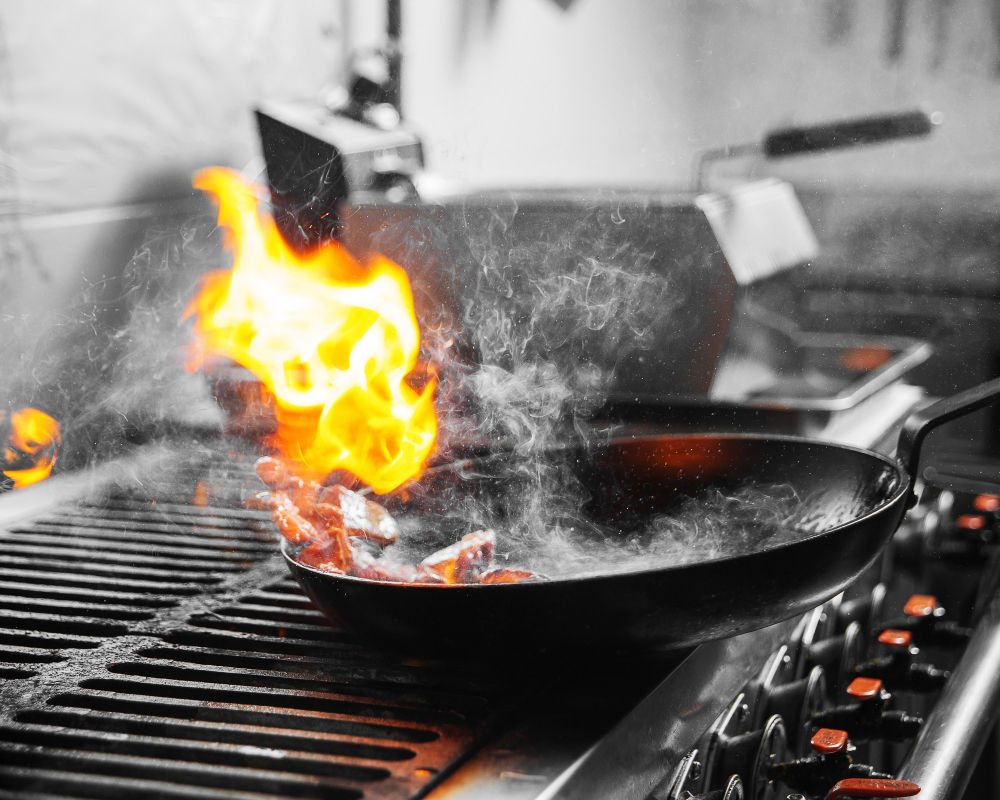
Whether you’re a home cook or working in an industrial kitchen, cooking oil fires are a real and serious threat. These fires can escalate rapidly, causing extensive damage and posing significant risks to life and property.
When it comes to domestic kitchens, many of us have experienced those heart-stopping moments when hot oil splatters onto the stovetop or catches fire unexpectedly. The high temperatures reached by cooking oils make them highly flammable substances.
A small mistake or momentary lapse in attention can quickly lead to disaster.
Industrial kitchens face similar risks but on a larger scale due to higher volumes of cooking oil being used for commercial purposes such as deep frying or grilling. With multiple appliances running simultaneously and staff members juggling various tasks, there is an increased likelihood of accidents occurring if proper precautions aren’t taken.
This is where kitchen hood fire suppression systems play a crucial role in mitigating these risks associated with domestic and industrial cooking oil fires. By detecting flames at their early stages through heat sensors installed near stoves or fryers, these systems activate swiftly before the situation escalates further.
The specialized design of these suppression systems allows them not only to detect flames but also suppress them effectively using either wet chemicals specifically formulated for extinguishing grease fires or dry chemical agents designed for general-purpose firefighting applications.
Fire Suppression Solutions for Fryers
The high temperatures involved can also pose a significant fire risk if not properly managed. That’s where specialized fire suppression solutions for fryers come into play.
These innovative systems are designed specifically to detect and suppress fires that may occur within or around the fryer area. They work by quickly detecting heat or flames using advanced sensors and then releasing an agent specifically formulated to extinguish grease fires effectively.
The unique challenge with fryer fires is that they involve flammable oils or fats, which can be difficult to control using traditional firefighting methods like water-based extinguishers. Fire suppression solutions for fryers address this issue by utilizing agents such as wet chemical foam or dry powder that are specially designed to smother grease fires without spreading them further.
By installing a dedicated fire suppression system for your commercial kitchen’s frying station, you provide an added layer of protection against potential disasters caused by uncontrolled oil ignition. These systems act swiftly when triggered, automatically shutting off fuel sources like gas lines while simultaneously deploying the appropriate firefighting agent directly onto the source of the flames.
Not only do these specialized systems help prevent extensive damage from occurring but they also minimize downtime during cleanup after a fire incident – allowing you to get back up and running faster than ever before.
Fire Suppression System Vs Traditional Fire Extinguishers
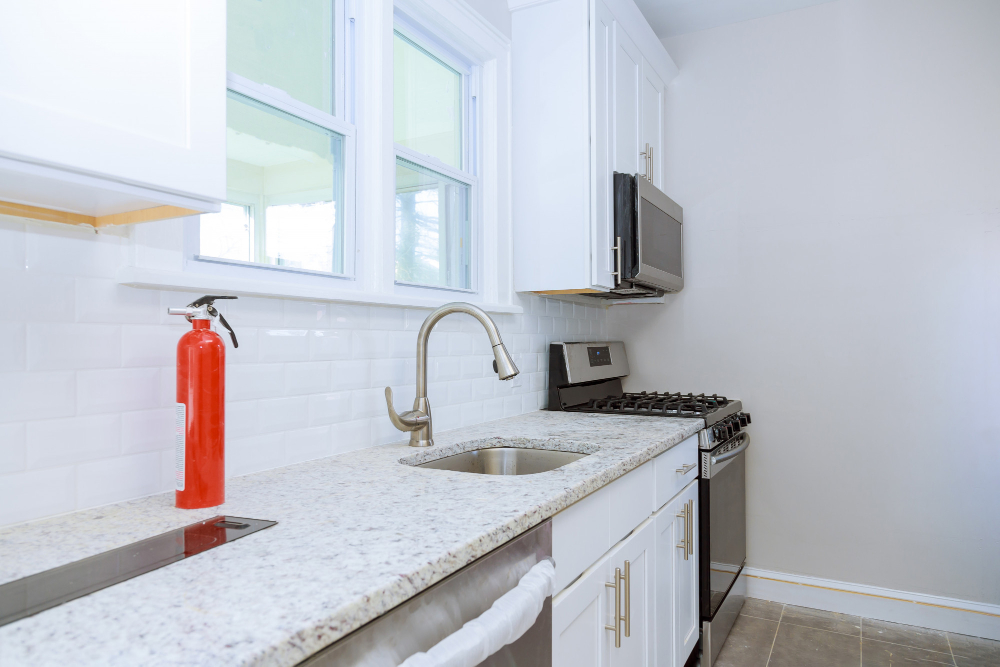
In this section, we’ll compare a Kitchen Hood Fire Suppression System with traditional fire extinguishers and explore their respective advantages.
While traditional fire extinguishers are undoubtedly effective in combating fires, they require manual operation and can sometimes be challenging to locate during moments of panic. On the other hand, a Kitchen Hood Fire Suppression System offers an automated solution that detects fires quickly and activates suppression measures without any human intervention.
Imagine being caught off guard by a sudden grease fire on your stovetop. With a traditional fire extinguisher, you would need to grab it from its designated spot (which may not always be within arm’s reach), aim accurately at the flames while ensuring proper technique for maximum effectiveness – all while precious seconds tick away.
In contrast, with a Kitchen Hood Fire Suppression System installed above your cooking area as part of an integrated system or standalone unit connected directly to your hood ventilation system – you can rest assured knowing that if there’s ever an unexpected flare-up or ignition event detected by heat sensors or flame detectors within seconds – automatic activation will occur swiftly without requiring any action on your part.
This automated response significantly reduces response time compared to manually operating a conventional extinguisher. The speed at which these systems activate means potential fires are suppressed rapidly before they have time to spread further throughout the kitchen space.
When using traditional firefighting methods like handheld extinguishers in commercial kitchens where large quantities of flammable materials such as oils and fats are present – there is always some risk involved due mainly because these substances tend not only fuel but also re-ignite easily even after initial suppression efforts have been made successfully; whereas specialized systems designed specifically for kitchen environments address this concern effectively through their unique design features tailored towards suppressing specific types of cooking-related hazards efficiently.
Benefits of Kitchen Hood Fire Suppression System

Picture yourself back in that chaotic moment when a small fire erupted on your stovetop. With a kitchen hood fire suppression system in place, you can rest assured knowing that help is just seconds away.
One of the key advantages of these systems is their ability to detect fires quickly and automatically activate an extinguishing agent tailored specifically for grease fires. This means that even if you’re momentarily distracted or unable to react immediately, the system will kick into action without delay.
Kitchen hood fire suppression systems are designed to effectively contain and suppress flames within seconds. By doing so, they minimize damage not only to your cooking area but also prevent potential spread throughout your entire home or establishment.
Another significant benefit lies in their ability to reduce downtime after a fire incident occurs. Traditional methods such as using handheld extinguishers often result in extensive cleanup efforts and prolonged closure while repairs are made.
However, with a properly functioning kitchen hood fire suppression system installed overhead, restoration time can be significantly reduced due to its swift response and containment capabilities.
Furthermore, having this safety measure installed demonstrates compliance with local regulations and insurance requirements for commercial kitchens – giving both business owners and employees peace of mind knowing they have taken proactive steps towards ensuring everyone’s well-being.
Life-Saving Benefits of Kitchen Suppression Systems
That’s where the life-saving benefits of a kitchen suppression system truly shine. Picture this: as you scramble to find an extinguisher or call for help, your kitchen hood fire suppression system springs into action without hesitation.
These systems are designed to detect fires at their earliest stages and swiftly suppress them before they have a chance to spread and cause extensive damage. By automatically activating when heat or smoke is detected, these systems provide immediate relief in critical moments.
Not only do kitchen suppression systems save valuable time by quickly extinguishing flames, but they also minimize the risk of injury or even loss of life. With their ability to contain fires within seconds, these systems prevent flames from engulfing your entire cooking area and potentially spreading throughout your home or establishment.
The importance of having such a reliable safety measure cannot be overstated – especially in commercial kitchens where high temperatures and flammable materials create an environment prone to accidents. Kitchen hood fire suppression systems offer peace of mind knowing that if disaster strikes while you’re busy creating culinary masterpieces, there’s an automatic defense mechanism ready to protect both property and lives.
Cost Considerations for Fire Suppression Systems

Before making any decisions, it’s important to consider the cost implications associated with these systems.
The cost of a kitchen hood fire suppression system can vary depending on several factors. Firstly, the size and layout of your kitchen play a significant role in determining the overall cost.
Larger kitchens may require more extensive coverage and additional components, which can increase expenses.
Secondly, different types of fire suppression systems come with varying price tags. Wet chemical systems are commonly used for commercial kitchens and tend to be more expensive than dry chemical or foam-based alternatives.
Installation costs should be taken into account when budgeting for a fire suppression system. Hiring professionals who specialize in installing these systems ensures proper setup but may add to the overall expense.
It’s also essential not to overlook ongoing maintenance costs when considering affordability. Regular inspections and servicing are necessary for keeping your fire suppression system functioning optimally over time.
While there is an initial investment involved in acquiring and maintaining a quality kitchen hood fire suppression system that meets regulatory requirements (which we’ll discuss later), remember that this investment pales in comparison to potential damages caused by uncontrolled fires or non-compliance fines from authorities.
How to Choose the Right Fire Suppression System

The safety and well-being of yourself, your loved ones, and anyone who steps foot in your kitchen should be a top priority. So how do you go about selecting the perfect fire suppression system? Let’s find out.
1. Assess Your Kitchen: Start by evaluating the size and layout of your kitchen space.
Consider factors such as cooking equipment, ventilation systems, and any potential fire hazards that may exist.
2. Understand System Types: Familiarize yourself with different types of fire suppression systems available in the market today.
These can include wet chemical systems specifically designed for commercial kitchens or dry chemical systems suitable for industrial settings.
3. Research Regulations: Look into local regulations regarding fire safety requirements for kitchens in your area or industry-specific guidelines if applicable (e.g., restaurants).
Ensure that any system you choose complies with these regulations to avoid penalties or compromising on safety standards.
4. Seek Professional Advice: Consulting with a professional who specializes in designing and installing fire suppression systems is highly recommended during this process.They will have expert knowledge on various options available based on specific needs like budget constraints or unique challenges posed by certain cooking methods used within your establishment.
5. Evaluate Maintenance Requirements: Consider ongoing maintenance requirements when selecting a system. Some may require regular inspections, testing ,and servicing which could impact long-term costs.
6. Get Multiple Quotes: Obtain quotes from reputable suppliers/installers after finalizing specifications. Compare prices along with warranties offered before making a decision.
Future Trends in Kitchen Hood Fire Suppression Systems
In this section, we’ll take a glimpse into the future and explore some exciting trends in kitchen hood fire suppression systems.
One notable trend is the integration of smart technology into these systems. Imagine having a kitchen hood fire suppression system that can communicate with other devices in your kitchen, such as stovetops or ovens.
These interconnected systems would not only detect fires but also automatically shut off gas or electricity supply to prevent further damage.
Another emerging trend is the use of advanced sensors and artificial intelligence algorithms. These intelligent sensors can analyze cooking patterns and identify potential hazards before they escalate into full-blown fires.
By continuously monitoring heat levels, smoke density, and even grease buildup within hoods, these sophisticated systems provide an extra layer of protection for busy kitchens.
Furthermore, there is ongoing research on developing eco-friendly extinguishing agents for fire suppression systems. Traditional agents like wet chemicals or carbon dioxide have been effective but may have environmental implications when discharged during emergencies.
Scientists are exploring alternatives that are equally efficient yet environmentally friendly.
Lastly, remote monitoring capabilities are becoming more prevalent in modern fire suppression solutions. Kitchen owners will be able to monitor their system’s status remotely through mobile apps or web interfaces—receiving real-time alerts about any issues detected by their system even when they’re away from their establishment.
With these exciting advancements on the horizon for kitchen hood fire suppression systems – from smart technology integration to advanced sensing capabilities – we can look forward to safer cooking environments where potential risks are identified swiftly while minimizing damage caused by fires.
FAQ
Is kitchen hood fire suppression system required?
Yes, the NFPA 96 requires a kitchen hood fire suppression system in commercial kitchens for all grease removal devices and cooking equipment that produce grease-laden vapors.
What does a fire suppression system do?
A fire suppression system is designed to extinguish fires by applying substances such as water, foam, or chemical compounds.
How much does a kitchen hood fire suppression system cost?
The average cost of a new or replacement kitchen hood fire suppression system, considering the number of appliances to be protected, is between $4000 and $6000.
How often should a kitchen hood fire suppression system be inspected?
The kitchen hood fire suppression system should be inspected every 6 months.
Can a kitchen hood fire suppression system be installed in any type of kitchen?
Yes, a kitchen hood fire suppression system can be installed in any type of kitchen.
What are the different types of kitchen hood fire suppression systems available?
The different types of kitchen hood fire suppression systems available include wet chemical, dry chemical, and water mist systems.




